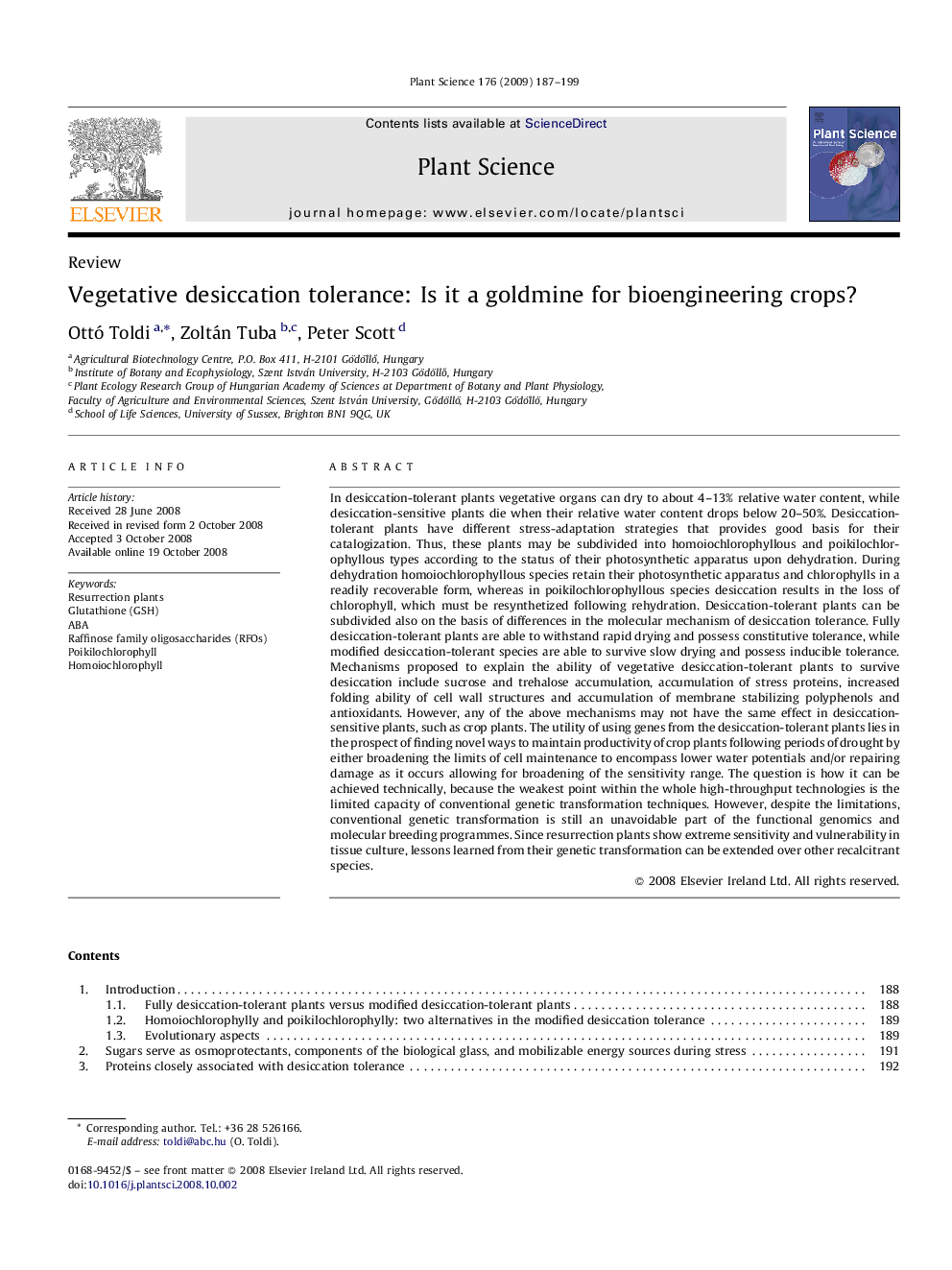| کد مقاله | کد نشریه | سال انتشار | مقاله انگلیسی | نسخه تمام متن |
|---|---|---|---|---|
| 2017745 | 1067815 | 2009 | 13 صفحه PDF | دانلود رایگان |

In desiccation-tolerant plants vegetative organs can dry to about 4–13% relative water content, while desiccation-sensitive plants die when their relative water content drops below 20–50%. Desiccation-tolerant plants have different stress-adaptation strategies that provides good basis for their catalogization. Thus, these plants may be subdivided into homoiochlorophyllous and poikilochlorophyllous types according to the status of their photosynthetic apparatus upon dehydration. During dehydration homoiochlorophyllous species retain their photosynthetic apparatus and chlorophylls in a readily recoverable form, whereas in poikilochlorophyllous species desiccation results in the loss of chlorophyll, which must be resynthetized following rehydration. Desiccation-tolerant plants can be subdivided also on the basis of differences in the molecular mechanism of desiccation tolerance. Fully desiccation-tolerant plants are able to withstand rapid drying and possess constitutive tolerance, while modified desiccation-tolerant species are able to survive slow drying and possess inducible tolerance. Mechanisms proposed to explain the ability of vegetative desiccation-tolerant plants to survive desiccation include sucrose and trehalose accumulation, accumulation of stress proteins, increased folding ability of cell wall structures and accumulation of membrane stabilizing polyphenols and antioxidants. However, any of the above mechanisms may not have the same effect in desiccation-sensitive plants, such as crop plants. The utility of using genes from the desiccation-tolerant plants lies in the prospect of finding novel ways to maintain productivity of crop plants following periods of drought by either broadening the limits of cell maintenance to encompass lower water potentials and/or repairing damage as it occurs allowing for broadening of the sensitivity range. The question is how it can be achieved technically, because the weakest point within the whole high-throughput technologies is the limited capacity of conventional genetic transformation techniques. However, despite the limitations, conventional genetic transformation is still an unavoidable part of the functional genomics and molecular breeding programmes. Since resurrection plants show extreme sensitivity and vulnerability in tissue culture, lessons learned from their genetic transformation can be extended over other recalcitrant species.
Journal: Plant Science - Volume 176, Issue 2, February 2009, Pages 187–199